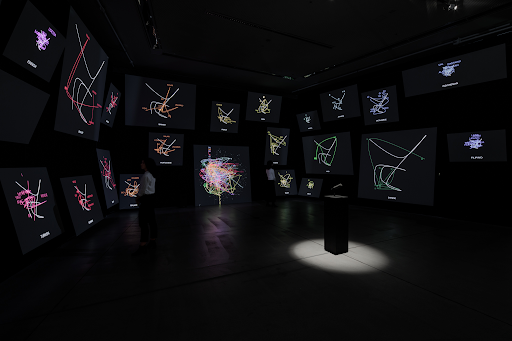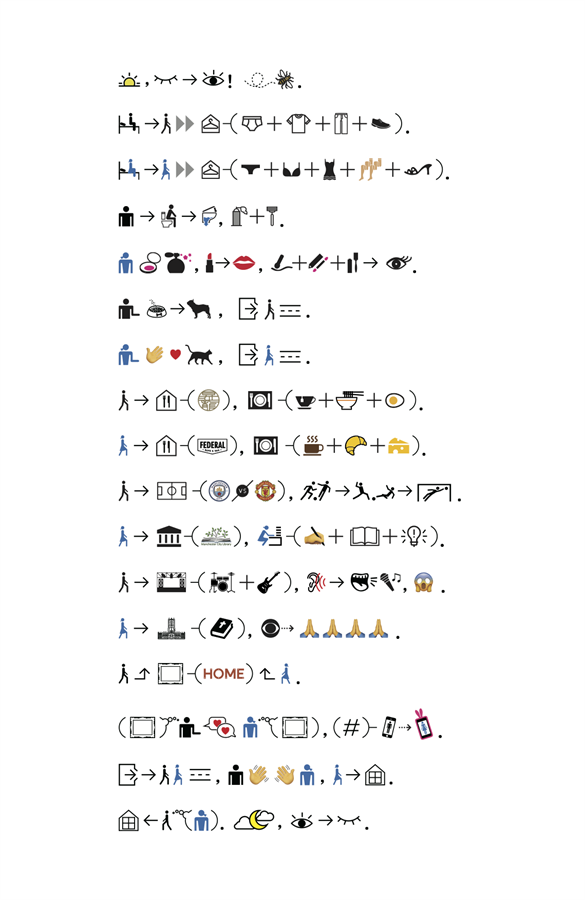Inventory/Connect
My current research questions are:
1. How do languages change the way we think, in the aspect of inner
monologue? (visual nonverbal thoughts; music/sound playing in the brain)
2. How can develop a shared langauge and bridge the language barrier?
(for Chinese and English, maybe in the lens of borrowed words)
3. How does langage related to cultural confidence? (the accent)
Project related to language and translation
1. Silenc
- Visualization of silent letters by eliminating or highlighting the silent letters
- All the silent letters are set in red text, when viewed with a red light filter, these letters disappear, leaving only the pronounced text (in Chinese, every character is phonetic; maybe that's a barrier of learning)
- Linkage to my research: The less phonetic the alphabet, the harder to correctly say the words

2. Found in Translation
Using their own spoken sentences, visitors viscerally experience the process of machine translation. Visualizations show how the machine learning model clusters words from different languages by semantic similarity, and translations are presented typographically and auditorily across 24 languages.

3. Choreographed Typography
An exploration of language in the aspect of how meanings are formed in langauge. A generative design work where the Latin alphabet is transformed into abstract geometry using 3–screen–projection.

4. Works from Artist Xu Bing (Boundless Book; Book from the Gound; Suqare word Calligraphy)
His use of symbols, emojis to convey meaning is super interesting. In the project "Square word calligraphy", he remixed one of remix of forms and meanings in Chinese and English.


Affinity Map & Cross-cultural Comparison
I use affinity map, trying to find a common ground between Mandarin and English. After that, I did cultural Comparion.


Takeaway from interview of bilingual speakers
1. Many bilingual speakers find themselves unable to speak one language
during conversation, they would incorporate another language into the
conversation.
2. Inner monologue: many of us don’t do inner monologues when speaking
the language that they are more comfortable with. People would rehearse
sometime when they are going to speak a language they are less familiar
with.
3. They think some meanings have lost during translation. So when they
are arguing about something, they are more inclined to use mother tone
to express anger precisely.
Approaches i'm considering
1. Memes and emojis as visual language (the way the same emojis being
interpreted differently accross cultures; cultural icons)
2. Reducing languages to icons in the same way that a human body can be
reduced to a shape or an icon
3. The idea of developing a shared language (remixing languages: I mix
Chinese and English a lot during conversation)
4. What if we are actually think and act like computers (for example,
Chinese language being a window system and English become a Mac)
5. Personification of the words [褒义词(words with positive meanings),
贬义词(words with negative meanings); maybe through the lens of
chroeography and body movement]
6. Learning to music as a way of learning language (i cannot read "a
little bit dangerous" by sing it as the lyric in Ariana's song)
7. Homophonic characters in Chinese (words with same prounication but
different structures)
8. Find a metaphor that represents the patterns in different language
9. The lost of meanings during translation
10. The relation between borrowed words and food. ( as I found borrowed
Chinese word in English are names of food.)
Links to my researches:
1. Mandarin Structure:
https://www.mslmaster.com/index.php/teaching-learning-resources/10-resources/60-strokes-components-and-radicals-of-chinese-characters
2. English Grammar & Borrowed words:
https://www.ruf.rice.edu/~kemmer/Words04/structure/index.html
3. Memory Retention of Chinese and English words:
https://link.springer.com/article/10.3758/BF03197682